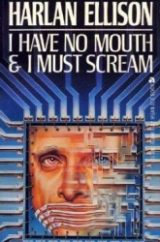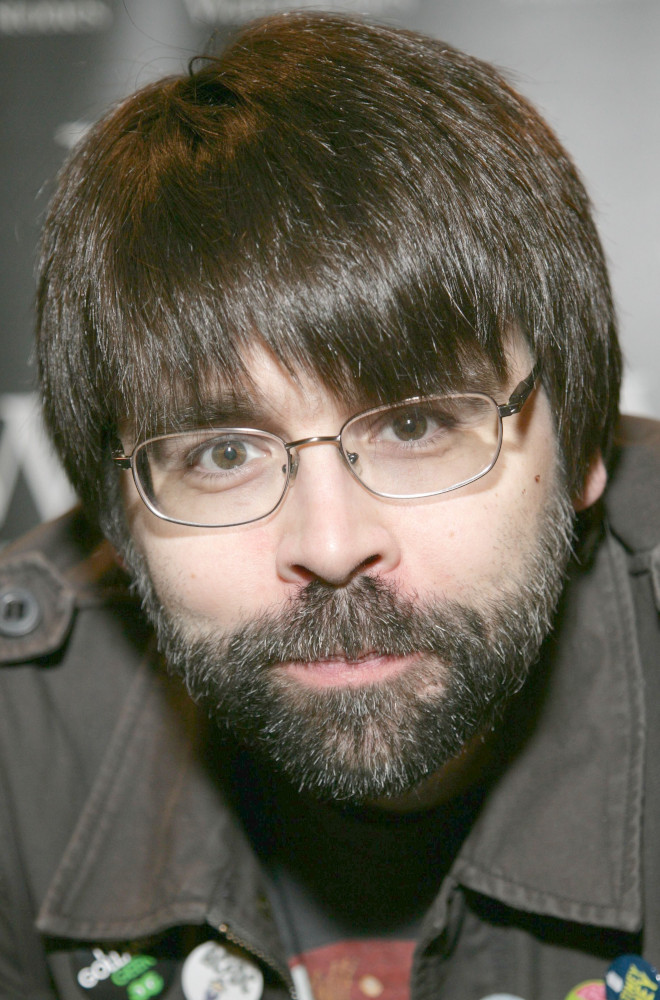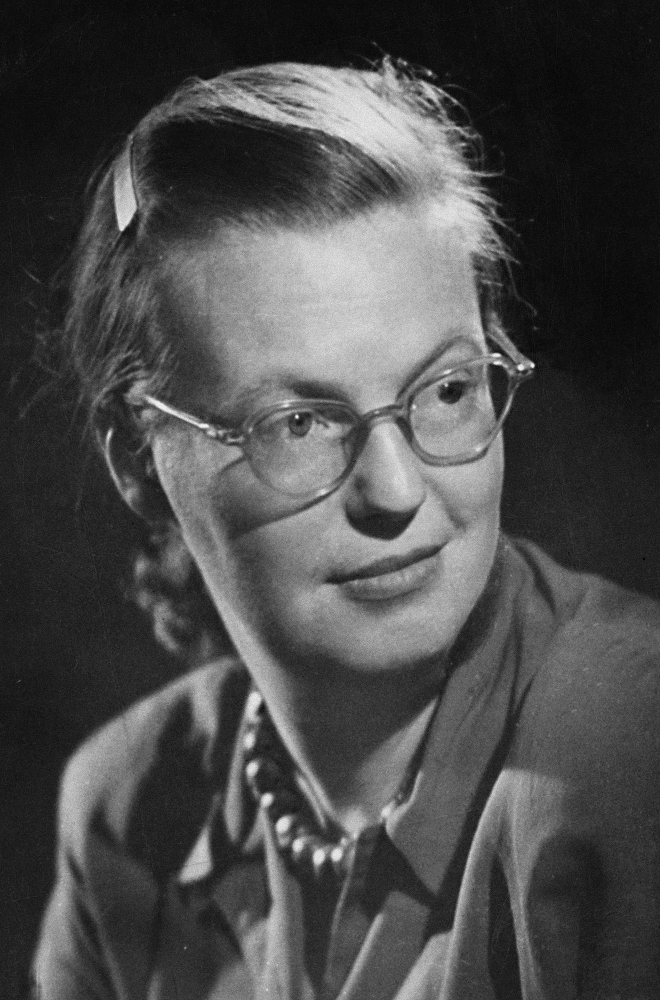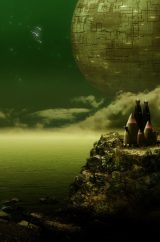 Horror Incarnate
Horror Incarnate
Thomas Ligotti is a contemporary horror writer who, although didn’t find much popularity among the general population, is a fan favorite in the horror fiction community. He is seen as one of the most influential writers of gothic literature and has a special place in the weird fiction genre. His most notable feature is originality and seemingly endless inspiration, which was the reason the acclaimed The New Yorker critic Terrence Rafferty spoke of him as “Horror Incarnate”.
Born To Fear
Born on 1953 in Michigan, Ligotti suffered from severe chronic anxiety and anhedonia, a condition signified by a major lack of motivation. Above just being a constant theme in his work, Ligotti’s anxiety would make him feel connected to the horrors he wrote as well. “I was born to fear. It’s as plain as that.” he claims, in an interview with SŁAWOMIR WIELHORSKI.
Ligotti attended Macomb County Community College from 1971 to 1973 and although he did not graduate from there, he got a degree from Wayne State University in 1978. After that, he started his writing career in the early 1980s with short stories for small press magazines. He’s still alive and kicking it today with his last published work being in 2021 and he even has a website for his fans.
Best Thomas Ligotti Books
| Photo | Title | Rating | Length | Buy |
|---|---|---|---|---|

|
The Conspiracy against the Human Race | 9.46/10 | 270 Pages | Check Price On Amazon |

|
Teatro Grottesco | 9.44/10 | 312 Pages | Check Price On Amazon |

|
Songs of a Dead Dreamer and Grimscribe | 9.56/10 | 466 Pages | Check Price On Amazon |

|
Noctuary | 9.22/10 | 304 Pages | Check Price On Amazon |

|
My Work Is Not Yet Done | 9.66/10 | 192 Pages | Check Price On Amazon |
The Conspiracy Against the Human Race

 Unfiltered Opinions
Unfiltered Opinions
The first book of Ligotti I’ll go over in this list of Thomas Ligotti book reviews is The Conspiracy Against the Human Race. Published in 2010, it’s a collection of essays revolving around his pessimistic philosophy and as you can guess from the title, antinatalist ideas. What makes this book very special for me is that it does not present us with a product of Ligotti’s views. Instead, it gives us a chance to look them straight in the eye.
Illusions of Reality
Perhaps the most terrifying, and also the most interesting part of the book is Ligotti’s proposals on the nature of one’s reality. Although I have quite commonly been exposed to the pessimistic idea that human experience consists only of illusions, Ligotti’s unwavering honesty in which he explains and branches on this idea provides a unique experience. He also ties this idea into antinatalism by suggesting all the illusions we think of as us ultimately bring us inescapable suffering and that we should think of ending it for our race if we ultimately want to end our suffering.
All in all, you might not agree with Ligotti’s views in the end but his work still provides simple yet eye-opening windows into the pessimist philosophy. This collection of essays has helped me extend my understanding of some pessimist concepts and it could be very useful for a beginner wanting to get familiar with the philosophy.
Teatro Grottesco

 Three Types of Hell
Three Types of Hell
The second in our list, as well as the second among best-selling Thomas Ligotti books, is Teatro Grottesco. It is a collection of short stories that are separated into three segments and are ultimately pieces of insight into human nature. Stories in the first segment “Derangements”, delve into corrupt realities. Whether the corruption of this reality is due to a supernatural force or the deteriorating mental health of the narrator, it is inescapable.
The second segment “Deformations” takes us on dystopian, cynical rides in industrial or office settings. The stories seem to focus on how we can be dehumanized by all means just for profit and obedience. Lastly, in the final segment “The Damaged and the Diseased”, Luggito covers the perilousness and the attractiveness of art. The titular story “Teatro Grottesco” is a part of this segment.
The Abyss Stares Back
As I stated above, every short story encompasses a subtle exploration of human nature. In every story, I was exposed to an intrinsic flaw that exists in all of us. That is, arguably, the real source of horror the stories derive from. Even though there are outer elements, the suffering that people go through can very much be addressed to the weaknesses and shortcomings of the characters in the stories when you look at it from an objective, emotionless standpoint.
Overall, Teatro Grottesco was a very interesting read for me. I can especially recommend it to readers wanting to get into Thomas Ligotti.
Songs of a Dead Dreamer and Grimscribe

 Role Models
Role Models
Next up on the list, we have the “Songs of a Dead Dreamer and Grimscribe” which is a combination of Ligotti’s first publication “Songs of a Dead Dreamer” and his second “Grimscribe”. As this is the earliest work of Thomas Ligotti, some sources he takes inspiration from are less than subtle. Especially, Edger Allan Poe and H. P. Lovecraft. This is not to say his individuality isn’t there but only that he hadn’t quite “digested” these role models of his fully.
There is a lot that can be criticized in these collections beyond just borderline unoriginality. I found most characters to be underdeveloped for example, they just failed to make me care about them. The settings were often boring as well and I think Ligotti tries too hard to portray them in this “hauntingly romantic” light which just gets stale after a while.
The Beauty of the Faulty
Still, I have never been the one to beat a dead horse so let’s get to what makes this collection readable. First of all, it sets a prime example of the subtle style of Ligotti. The stories draw their horror partly from being mysterious, as well as being hard to comprehend at times. The book is also wonderfully nihilistic that you can’t shake off the feeling of dread as you read through it. At times, I even had to limit my imagination so I wouldn’t upset my stomach.
In the end, though, the flaws still outweigh what good this book has to offer. This one is definitely not the best Thomas Ligotti book.
Noctuary

 Seek & Ye Shall Find
Seek & Ye Shall Find
This one is among the most popular Thomas Ligotti books and it is another collage of his short stories. I found Noctuary to be very similar to Teatro Grottesco which was mentioned above. Especially its last segment, “The Damaged and the Diseased” in the sense that the characters are either lured into or actively seek the horrors they ultimately face. This book, like Teatro Grottesco, consists of three different segments as well.
“Studies in Shadow”
The stories in this segment include characters who unknowingly walk into their dooms. All of the protagonists are in pursuit of something, mostly unrelated to the horrors of the stories. And as the protagonist follow their pursuit, they are brought closer to their doom. Like a sheep following a trail of grass into a lion’s nest, they walk themselves to slaughter.
“Discourse on Blackness”
Stories in the second segment are similar to the first one in that they are all stories of the protagonists’ downfalls and how they get there. What is different however is that these ones are a little more chaotic. The fall of the protagonists in the first segment was almost like clockwork, their every move contributed to their end directly. In these ones, the road they take is not always as “railroaded” so to say. Beyond that, they are almost identical to the first ones.
“Notebook of the Night”
In the final segment of the book, the chaos that was starting to build in the second segment reaches its peak. The stories I was given felt more like fever dreams and psychotic episodes rather than the sober-minded stories I read beforehand. They certainly don’t pose any mystery like the previous ones either. Instead, there are multiple gaps in the knowledge given to us that I can only fill with my imagination. This I think, makes the stories in the last segment the best and most disturbing ones in the collection.
My Work is Not Yet Done

 Criticization of Work
Criticization of Work
The fifth piece in our Thomas Ligotti book list is a collection of one novel and two short stories that all dwell in the corporate world. In these stories, Ligotti is trying to show how our current day’s workplace environment as well as the devilish competition in the business world affect the people existing within it. The way Ligotti portrays the business world is devilishly vivid and it was literal nightmare fuel for me.
A Hateful Man
In the titulary story, My Work Is Not Done – which I think is among the best Thomas Ligotti novels, if not the best Thomas Ligotti novel – I was allowed into the mind of Frank Domino. Frank is a nihilistic man whose driving force in life seems to be his general hatred for everything. He hates the anonymous mega-corporation that he works at, he hates his coworkers whom he calls “the seven dwarves”, and most importantly he hates life itself. Even so, he seeks to advance in life out of simple spite and the fear his one-dimensional outlook on life endlessly subjects him to.
I followed as Frank tries to get promoted to a higher position which just opened up. However, as I said above, Franks’s outlook on life in general is a very distressing one and he is quick to get overly paranoid when he notices some small clues that the seven dwarves are in the effort to sabotage his promotion. He counts his suspicions confirmed when he in fact doesn’t get the promotion and is let go from the corporation altogether. Devoid of any value or virtue, he sets out to exact revenge in the worst possible ways he can think of.
The Deadly Pair
The stories shed some light on how the profit-driven capitalistic system can create simple-minded, underdeveloped individuals who are capable of only hatred and fear. And, how you can create completely deranged and dehumanizing situations when you put these individuals in power hierarchies that are the perfect breeding grounds for toxicity.
The Spectral Link

 Creativity Restored
Creativity Restored
We continue our top Thomas Ligotti books list with one that is spectacular in its origin. The making of this collection takes place after the hospitalization of Ligotti due to an emergency diverticulitis surgery. Ligotti, who’s been going through a period of literary infertility seemingly restores his creativity after, in his words; “being slit open in a couple directions.”. This, in turn, gave us the two best Thomas Ligotti stories that make up the entirety of this book.
Metaphysica Morum
In the first novella Metaphysica Morum, It’s clear to me that Ligotti wanted to cultivate the anachronism that we talked about earlier. Thus, the story revolves around the apathy of a terribly demoralized man who has no direction in his life except the nightmarish dreams and sees himself as nothing more than a descendent of “degenerate swamp dwellers”.
The protagonist trying to make some sense of his life and dreams take up the biggest space in the story along with the interactions between him and his curiosity-inducing therapist Dr. O. who evidently appears to have helpful intentions but is also really, really weird. I enjoyed the humoristic approach Ligotti has taken to his philosophy with this piece and the story overall turned out to hold a lot more than I expected.
The Small People
I saw in the second novel “The Small People” Flear brush marks of themes from “The Conspiracy Against the Human Race”. The story can get pretty complicated if you try to make sense of from the pessimistic perspective like I did but I will try to get it as simple as possible for you. In essence, this novella’s world includes creatures called small people who recognize all aspects of pessimism and decided to just be a species-sized middle finger to it.
The unnamed narrator of the story is filled with hatred for the small people from childhood and acts upon their hatred by deciding to learn all about the small people. However, there are little to no literary sources available on them and everyone else is in denial of their existence. When he finally finds a companion who shares his knowledge and disgust of small people, they begin researching them out in the wild. The story gets pretty wild from there but you get the gist.
In a Foreign Town, in a Foreign Land

 Early Gems
Early Gems
Published in collaboration with Current 93’s 1997 album which shares the name, “In a Foreign Town, in a Foreign Land” is the last book in my best books by Thomas Ligotti list. It is a collection, like all other works of Ligotti, of four short stories which find a place among the best-rated Thomas Ligotti books despite being somewhat of earlier works.
Monotony Followed by Greatness
I was greeted by familiar themes of Ligotti in the first story; suicidal ideation and the pessimistic idea that we are all just a part of a cosmical theatre devoid of substance. While I know I can always trust Ligotti masterfully portraying these concepts, I think the story lacks almost all the other things that make great Ligotti stories great.
The second and third stories, however, were much more satisfying for me and they are the reason I saw this book to be fit to include in my best books by Thomas Ligotti list. In these stories, Ligotti plays around with huge philosophical questions like they are nothing. One after the other, I was bombarded with uncanny imagery and paradoxical, riddling ideas. It is fair to say Ligotti shows zero hesitation to be original and aces it.
Subverting Both Ideas and Expectations
The last story also handles the themes processed in the first one but this time around, much more gracefully. It’s almost as if Ligotti was trying to change my thoughts on these concepts with the two stories in the middle and after he did that, he served to me a beautifully crafted tale to satisfy my newfound interests.
Final Thoughts
Although sometimes chilling and disturbing, Ligotti’s stories were almost always enjoyable with the intrigue they created. It was hard to make this “Thomas Ligotti books ranked“ piece since most of his work can not be compared with each other but I hope I could give you some ideas.
Robert Hazley
Robert is a science fiction and fantasy geek. (He is also the best looking Ereads writer!) Besides reading and writing, he enjoys sports, cosplay, and good food (don't we all?). Currently works as an accountant (would you believe that?)





